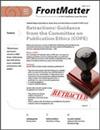车站设施与噪声评价:轻轨列车站的多层次分析
IF 0.4
4区 工程技术
Q4 ACOUSTICS
引用次数: 1
摘要
噪音是交通最常见的后果之一。公共交通系统,如达拉斯地区快速交通(DART)当局提供各种交通方式。尽管公众通勤服务的可用性对社区来说是一个福音,但公共交通系统是城市日常生活中噪音过大的潜在来源。本文通过选取的轻轨站点,探讨了轻轨站点设施与站点和社区尺度上的噪声影响之间的关系。通过多层次线性分析,了解火车站设施和邻里特征对声级的影响程度。使用II型声压级(SPL)计,在工作日和周末进行了数周的声音测量。通过检查车站设施、建筑环境和社区的社会人口特征,这项综合研究的结果揭示了对声音水平的重大影响。设有自动售票机和信息留言板的车站对噪音声级的影响更大,而掩蔽处、船员室、自行车储物柜、洗手间和挡风玻璃则与噪音声级显著负相关。此外,道路密集、限速更高、社区设施更多、交通线路数量更多的社区,噪音水平的可能性也会增加。建议包括为实施制定变革性政策,以及为交通当局、交通工程师和规划者提供解决噪音的方法。规划和工程方面的舒适性,美观性,安全性和公共卫生,因为火车站是通勤者和周围社区的日常使用空间,也应该考虑。本文章由计算机程序翻译,如有差异,请以英文原文为准。
Station facilities and noise assessment: A multilevel analysis on light rail train stations
Noise is one of the most frequent consequences of traffic. Public transportation systems, such as the Dallas Area Rapid Transit (DART) authority provides various modes of transportation. Even though the availability of commuting service for the public is a boon to communities, mass
transit systems are potential sources of excessive sound levels in daily urban life. This article examines the nexus between the transit station facilities of light rail train (LRT) stations and noise implications at both station and neighborhood scales by studying selected LRT stations. A
multilevel linear analysis was conducted to understand the degree of train station amenities and neighborhood characteristics that affect sound levels. Using a type II sound pressure level (SPL)meter, sound measurements were obtained during the weekdays and weekends over several weeks. Upon
examining the station amenities, and built environment and sociodemographic characteristics of the neighborhood, findings of this comprehensive research reveal significant implications for sound levels. Stations with ticket vending machines and informative message boards include a higher degree
of significance on SPLs, while shelters, crew rooms, bike lockers, restrooms, and windshields are significantly and negatively associated with the noise levels. Additionally, neighborhoods with dense roads, higher speed limits, more neighborhood facilities, and a higher number of transit routes
have an increased likelihood of noise levels. Recommendations include creating transformative policies for implementation, and approaches addressing noise for transit authorities, transportation engineers, and planners are presented. Planning and engineering aspects of comfort, aesthetics,
safety, and public health, as train stations are daily use spaces for commuters and surrounding communities, should also be considered.
求助全文
通过发布文献求助,成功后即可免费获取论文全文。
去求助
来源期刊

Noise Control Engineering Journal
工程技术-工程:综合
CiteScore
0.90
自引率
25.00%
发文量
37
审稿时长
3 months
期刊介绍:
NCEJ is the pre-eminent academic journal of noise control. It is the International Journal of the Institute of Noise Control Engineering of the USA. It is also produced with the participation and assistance of the Korean Society of Noise and Vibration Engineering (KSNVE).
NCEJ reaches noise control professionals around the world, covering over 50 national noise control societies and institutes.
INCE encourages you to submit your next paper to NCEJ. Choosing NCEJ:
Provides the opportunity to reach a global audience of NCE professionals, academics, and students;
Enhances the prestige of your work;
Validates your work by formal peer review.
 求助内容:
求助内容: 应助结果提醒方式:
应助结果提醒方式:


